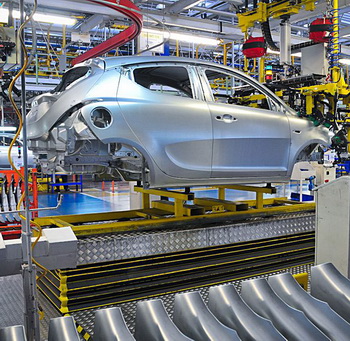 |
|
Production of the new third-generation Fiat
Panda has been switched from Tychy in Poland
to the former Alfa Romeo factory at
Pomigliano d’Arco near Naples. This,
however, has been counterbalanced to some
extent by the transfer of the new Lancia
Ypsilon (above) from Italy to Poland |
|
|
|
The
Italian stock market regulator, Consob, has reportedly
asked Fiat to clarify its much-touted 20 billion euro
‘Fabbrica Italia’ factory investment plan according to
La Repubblica newspaper, the news coming right in the
wake of the Fiom union strike on Friday.
The one-day of industrial action called by the combative
Fiom Cgil union was designed to heap pressure on Fiat to
come clean on the Fabbrica Italia plan, which claims
that an investment of 20 billion euros will be made in
the company’s Italian car factories In Italy – excluding
one plant, Termini Imerese, which builds the outgoing
Lancia Ypsilon and is set to close at the end of this
year.
“The Fabbrica Italia plan doesn’t exist anymore – there
are no new models, market share is falling and temporary
layoffs are increasing,” said Fiom boss Maurizio Landini
last weekend when plans for the strike were fleshed out.
“Fiat workers, not its managers, want to keep the
company in Italy.”
The Commissione Nazionale per le Società e la Borsa (Consob)
is the Italian public authority charged with
responsibility for regulating the Italian securities
markets. Fiat’s Fabbrica Italia plans are classed as
‘price sensitive’, and thus any failure to implement
falls within the watchdog’s remit. In a private letter
to Fiat, Consob has asked the carmaker to explain
“contradictory announcements” about its production
plans, particularly the chopping and changing that is
going on over the future of the Mirafiori factory. The
Bloomberg newswire reported yesterday that: “The
regulator said the request is justified because the
business plan for the Italian plants weigh on the stock
price valuation.”
Under the Fabbrica Italia (‘Italian Factory’) plans, a
massive 20 billion euro investment was proposed for
Italy by 2014 in exchange for the closure of the Termini
Imerese factory in Sicily and sweeping changes to
worker’s rights. However, there have been few signs of
this investment taking place (even leaving aside the
issue of whether Fiat can afford these sort of sums),
apart from the arrival of the new third-generation Fiat
Panda which has been switched from Tychy in Poland to
the former Alfa Romeo factory at Pomigliano d’Arco near
Naples. Even this, however, has been counterbalanced to
some extent by the transfer of the new Lancia Ypsilon
from Italy to Poland.
Plans for the underutilised Mirafiori factory in Turin
have been of the greatest concern. A deal was originally
thrashed out with the unions at the factory after the
accepted sweeping changes to working practices that
foresaw a range of new vehicles being spun off the C-Evo
Wide/CUSW architecture. The Jeep ‘C-SUV’, a replacement
for the Compass/Patriot twins, was set to be the first
out of the blocks, followed by a C-SUV version destined
for Alfa Romeo. Combined production was touted at an
optimistic 280,000 units a year. Instead, all these
plans went out of the window at the beginning of this
month, and on October 3, Fiat announced that it was
considering the development of a new ‘baby’ Jeep to take
the off-road brand into B-segment for the first time,
along with the possibility of an in-house replacement
for the Fiat Sedici crossover (the current version is
contract-manufactured by Suzuki in Hungary).
However, the carmaker’s unions and many industry
observers have put very little store in either these
plans being too rooted in reality; in fact, the whole
Fabbrica Italia idea has never been taken too seriously,
and Consob has now stepped in to ask for clarification.
It is reported that Consob has asked for clarification
when Fiat reports its third quarter results at the end
of next week.
|
|
|